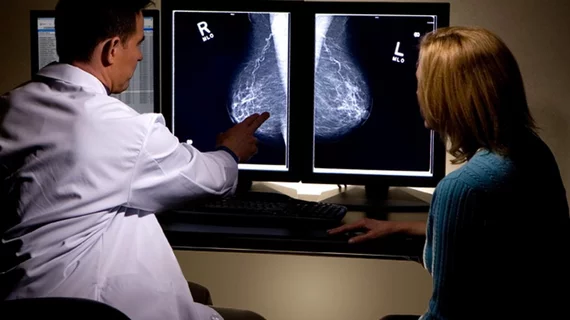How breast cancer presents on imaging based on race: An updated analysis 25 years in the making
A new analysis recently highlighted numerous differences in how breast cancer presents on imaging based on a patient’s race.
Whether patients are African American (AA) or Non-Latina White (NLW) women was found to have a significant impact on the appearance of breast cancer in both mammographic and sonographic imaging exams. This is important to recognize because, although cancer detection rates are similar among both races, mortality is approximately 40% higher among AA women.
Experts involved in the study suggested that not only could identifying these unique cancer characteristics benefit radiologists in interpreting breast imaging, but they could also be of good use for other clinicians in creating screening plans based on patients’ personalized breast cancer risk assessments.
“Although there is a body of research on social determinants of health that may lead to worse breast cancer outcomes in AA compared to NLW women, it is unclear if there are differences in the imaging characteristics of breast cancer between these racial groups,” corresponding author Jieqi Wang of the Mallinckrodt Institute of Radiology at Washington University School of Medicine and co-authors explained. “To our knowledge there has only been a single report comparing the imaging findings of AA and NLW women, which was conducted nearly 25 years ago.”
That prior study found that cancer presented similarly in both racial groups. However, it predated the use molecular subtyping of breast cancer and was limited by the use of film mammography, whereas experts involved in this study had the benefit of more advanced imaging, as they utilized imaging obtained between 2015 and 2018.
For this study, experts analyzed the cases of 856 women (270 AA, 586 NLW) with biopsy proven ductal carcinoma in situ or invasive breast cancer. They found that, compared to the NLW group, AA women had higher rates of non-dense breast composition, were less likely to have screen detected architectural distortion and were more likely to have screen-detected oval/round masses. AA women were also more likely to present clinically with high density masses demonstrating posterior enhancement.
On mammograms, calcification and non-spiculated margins were observed more frequently in AA women and on ultrasound, that same group more often had circumscribed margins in comparison to the NLW group.
The researchers noted that payment mandates for advanced imaging, such as digital breast tomosynthesis, did not come into effect until after their study enrollment had closed. They suggested that this likely impacted the instances of architectural distortion among the groups, as it was utilized less in the AA group.
They went on to indicate that their updated findings could offer radiologists “a better framework to approach breast cancer diagnosis in the AA population in their clinical practice." They suggested that these findings should be considered alongside underlying socioeconomic factors.
The study abstract is available in Clinical Imaging.

